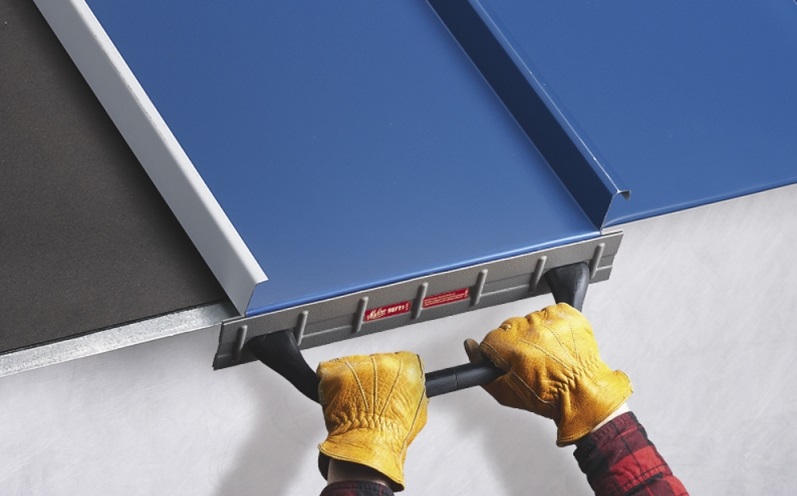Based on the name, it should seem readily apparent what a metal folding tool does. A tool for folding metal does that – it folds metal. However, in sheet metal roofing and in other trades revolving around the use of sheet metal, a metal folding tool may have a very specialized application.
Consider that there are specialized tools known as brakes that are not typically referred to as metal folders, although they do produce folds in metal. Brakes, which are customarily fairly large, are used for creating folds at the edges of larger panels of sheet metal before the panels are even put into place.
Then there are also metal benders, which are used to create bends or “folds,” if you will, in sheet metal, but these are typically not termed as metal folding tools either. They’re typically called benders, and they’re used for starting bends in sheet metal that can be seamed, or for finishing eaves.
That brings us to the tools that are usually described as folders, such as edge folders and other dedicated folding tools. These tools are usually operated by hand and can be used to fold edges of sheet metal to start (or finish) eaves.
Malco Tools makes some of the best metal folders in the industry. Tools like their Malco Drip Edge Folding Tool are highly specialized for creating drip edges at different depths. The tool is slotted to receive a panel of sheet metal up to 22 gauge steel; the user simply slides the tool over the edge of the sheet metal and then bends it in the direction desired. It creates crisp, uniforms folds along the edges of the panel in question.
The more generalized Malco Folding Tool is also indicative of a high level of quality. It is slotted and has sight holes built into it so the user can properly align the depth of the fold before making it. Made of lightweight aluminum, this metal folding tool is comfortable and easy to use and can be used with sheet metals up to the thickness of 24 gauge steel.
Like some benders, it can be used for making uniform bends in sheet metal. However, it’s highly useful for making precise folds, due to its smaller size and the nature of its use. Larger rollers are more specialized for making longer bends at the edge of a sheet of metal.
Another class of tools that make folds, at least categorically, in sheet metal, are seamers. These tools could look like either large clamps or pliers and are ideal for making bends to start seams, or folding them closed to shut them together. Also, since some of them have large handles, they afford a lot of leverage to the user so the seams can be made with minimal fatigue.
In essence, there’s always a possibility that the real difference between the two tools is primarily in name and not in function. However, as illustrated throughout this article, there are fine discrepancies in the manners in which these different tools are used, at least some of the time.
To learn more about the different types of metal folding tools, benders, seamers, pliers, and brakes that sheet metal roofers and other tradesmen routinely use, visit John Stortz & Son at STortz.com. There you’ll find plentiful resources on the use and categorization of these tools, along with the tools themselves.
Stortz has been providing the highest quality hand and power tools to its customers for well over 150 years, and they have not wavered from their motto. They believe in buying something of quality, once, for life, and they haven’t strayed from that maxim. Visit their website or give them a call at 888-847-3456 today to learn more.












